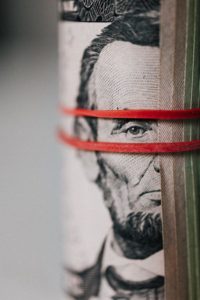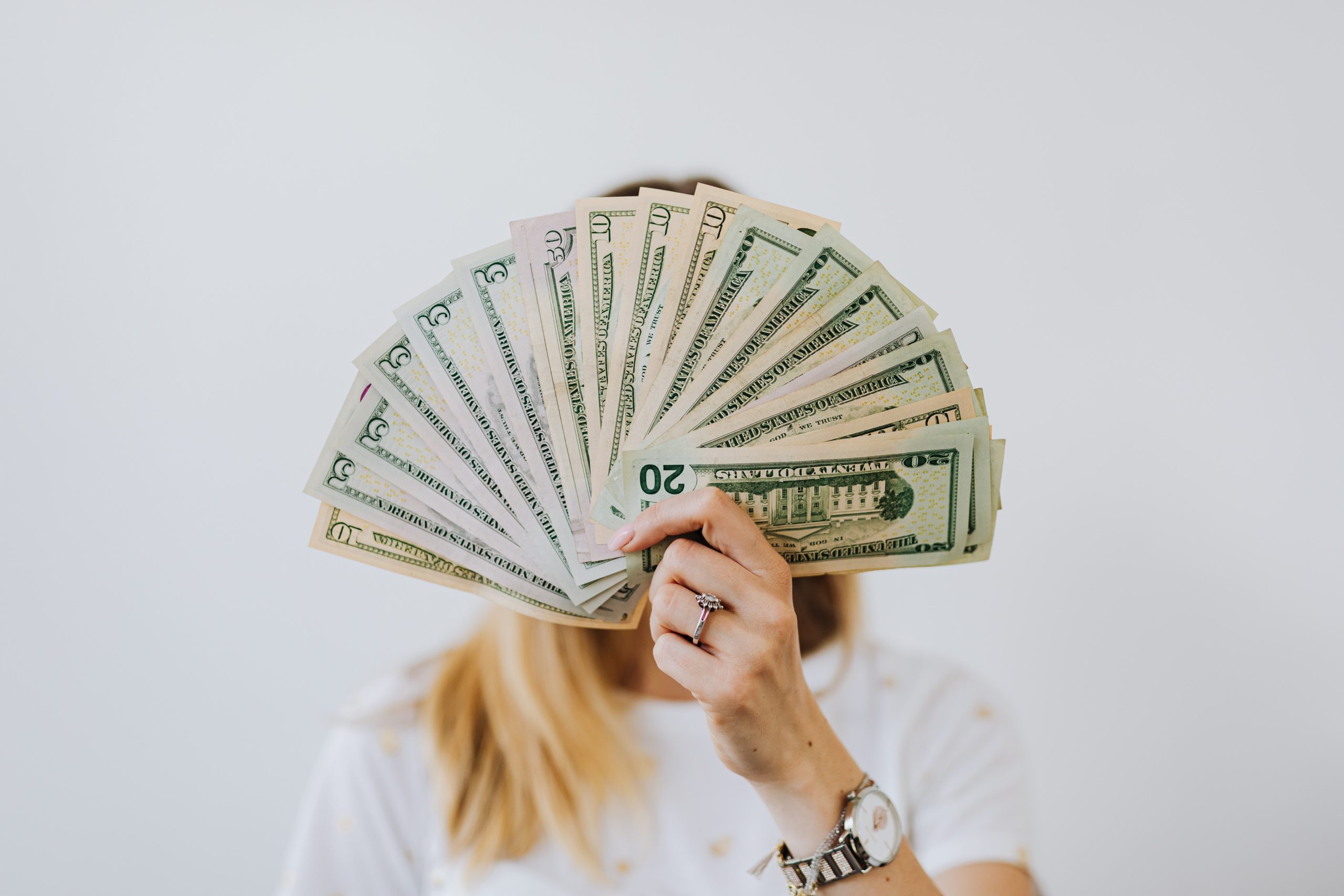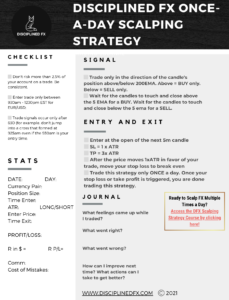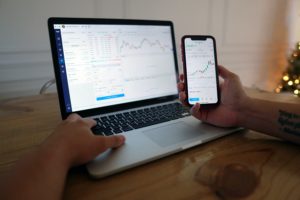How to STOP LOSING SO MUCH MONEY While Day Trading Forex as a Beginner
Are you losing more money than you return every month? If so, there are three crucial questions you need to ask yourself before you put on another trade.
Whether you’re in your first few months of trading FX or you’ve been trading for a while, you may find that even though you’ve managed to land a few decent trades, at the end of the week or the end of the month, you still wind up in a net loss.
 Perhaps when you first started to learn to trade, you looked around Youtube and the rest of the internet and saw different people talking about how they make a living off of trading. Whether it was the flashy cars or the nice desks and houses, or even screenshots of account sizes, something told you overall that this person has reached success and if they can do it, so can you. That’s okay, it’s an empowering feeling to be inspired by the success of others. But sometimes this can lead us to have unrealistic expectations.
Perhaps when you first started to learn to trade, you looked around Youtube and the rest of the internet and saw different people talking about how they make a living off of trading. Whether it was the flashy cars or the nice desks and houses, or even screenshots of account sizes, something told you overall that this person has reached success and if they can do it, so can you. That’s okay, it’s an empowering feeling to be inspired by the success of others. But sometimes this can lead us to have unrealistic expectations.
If you’re like how I was when I first started trading, maybe you thought to yourself, “Oh, I’m smart enough to learn things on my own, I can figure this out, too, and in a couple of months I’ll weed out the beginner mistakes and make some good money out of this really cool skill.”
But then, a few months pass, and the mistakes aren’t really getting any less frequent. Actually, you may not even be aware of some of the mistakes you’re making and it feels like the same crummy situations are playing out week after week after week. But as you keep searching the internet or maybe you’ve moved to books and have tried new tactics or strategies from all of those, you’re still coming up short on actual follow-through.
I remember that place of total confusion with the markets and frustration with oneself. It doesn’t get any better unless you take action. To get you out of confusion and frustration we need to put you back into clarity and on the path to gaining control over your trading decisions. So today we’re going to talk about some approaches you can take to stop losing so much money while you’re learning how to trade Forex. In order to do so, we need to ask 3 crucial questions before trading again. So let’s dive in!
The first question is: Are you trading with a plan that can actually make money?
There’s actually two parts to this question.
First, let’s make sure that you’re actually trading with a plan.
If I came over and sat down next to you when you’re trading next, would I be able to find a document, whether physical or digital, that shows me your set of rules you use to trade? If the answer is no, you’re in luck, I have a free plan for a once-a-day trade that you can check out. If that doesn’t work for you, see if you can find another trustworthy source for a worthwhile plan.
When you trade without a plan, you’re left with a mix of faulty logic and mere emotion to make the decisions on what, when, and how you trade. There’s no consistency and trying to figure out what works and doesn’t work will be really hard to track. I highly recommend that new traders begin by learning to trade a mechanical strategy, that is, a strategy with strict rules on aspects of the trade like entries, exits, position size, and more. Then once you have experience and build discipline with this trading style, you can learn how to use a discretionary trading style, one that lets you call the shots based upon market patterns, since you’ll be able to trust yourself to follow your own rules.
The second part of this question (are you trading with a plan that can actually make money?), deals with whether the strategy you have is actually making money.
If we were to remove any losses or excess profit committed during mistakes, did the strategy actually profit over the last month or even the last quarter?
Not every strategy will be profitable every month.
If that’s the case, then the profitable months better outweigh the losing ones. If it’s not profitable over a month and it’s not profitable after a quarter, then it’s likely this trading strategy doesn’t fit the current market or it’s not a realistic strategy. If that’s the case, then it’s time to find something new. Again, you can check out this free strategy I came up with, or you can find another reliable source for a pre-made strategy that has backtested results to support its validity.
The second question to ask is: Are you trading too much at a time?
This includes both whether you’re trading too much money on a single trade and whether you’re taking too many trades on a given day.
First, we need to talk about how much money is appropriate to trade on any given trade. Usually, most successful traders will have a set percentage of their trading account size that they will use for each trade. This is often 0.5%-2% of their account sizes. The reasoning behind this is that any good strategy will likely hit a string of losses because the markets are always shifting.
You don’t want to blow half of your account on a single trade otherwise you’ll lose everything after two bad trades. I personally trade about 1.5% of my account for the scalping trades I take.
If you look at some of the interviews in any of Jack Schwager’s interviews with highly successful traders in the Market Wizards series, you’ll learn that many of them will change their position sizes and money risked based upon different market conditions.
If you’re just starting out, again, I recommend having very clear rules and this includes having a rule for what percentage of your account you will risk on every given trade. This will likely be between 0.5%-2% of your account.
Second, even when you get your risk size down pat and start to trade the same amount for each trade, you’ll also want to put a cap on how many times a day you’ll trade.
If you follow any of the strategies I’ve created for scalping Forex, you probably won’t get more than one to three signals on any given day, so this shouldn’t be a problem. However, if you’re in a faster-moving market, like with stocks, you’ll probably want to trade no more than 5 or 6 times a day. This is what I’ve heard around trading forums but it’s a number you should develop from your own experience.
Some people can stay disciplined for only three trades but may start to fall apart after the third and break some rules here or there, especially if the first few trades resulted in a loss. Contemporary research on willpower has shown us that when it comes to making tough decisions, our willpower is kind of like a bank account and we make withdrawals with every decision. The key is to stop trading before we get into discipline fatigue, and even for day traders, this can look like ending the trading day after only after three or four trades.
Finally, our third question to consider is: Are you committed to taking your stop losses?
This is probably the most important question in this lesson because failing to take stop losses is one of the most expensive bad habits a trader can commit.
I’m going to ask again and rephrase this question: Are you committed to taking your stop losses EVERY SINGLE TIME THEY ARE HIT?
Not every once in a while when you’re feeling good, not for nearly all your trades except that one trade where it looked like a head and shoulders was forming, no, I’m asking you if you are capable of taking your stop losses EVERY SINGLE TIME THEY ARE HIT?
If you can’t answer yes to this question, then we’ve found one of your most important areas of trading you need to focus on improving right now.
I want you to internalize that trading is a probability game. There is no guarantee with any kind of strategy or setup that a certain outcome will unfold. Our goal isn’t to never lose but to lose less often than we win or make more from our winners than the losses so that we come out in profit, or some combination of the two.
When we play the probability game of trading, we have to be comfortable with losing. It’s weird, it doesn’t feel good to lose, but it’s actually pretty consistent with achieving anything in life to persistent instead of trying to perfect.
For example, with business, I don’t know any business owners who have never had to deal with someone returning their product. Not everyone is going to fall in love with every item being sold.
The goal is to make the most of the winners and to minimize, but not avoid loss. We want to manage our losing trades to be small losses instead of big ones that can drain our accounts dry.
So what do you do when you’re not able to commit to your stop loss?
Let’s run through a few quick solutions before talking about some bigger commitment strategies for improvement.
First, ask yourself if you’re using stop-loss orders.
These are orders that can be added to your trades so that when your stop-loss target is hit, the brokerage will automatically close the trade for you.
Some people might be afraid that their stop loss targets will get hunted by bigger traders but most of you watching this will be trading with a small enough of an account where this won’t make much of a difference. Also, if you can’t take a stop loss then your bigger problem isn’t your stops getting hunted every now and then.
Next, if you’re comfortable with using stop-loss orders but find that you are constantly moving them to avoid closing a trade, then my word of advice for a quick fix is to fill out both a take-profit order and a stop-loss order after entering the trade. Then, close your chart screens so that you can’t watch. Make sure you can get a notification email or a banner on your phone to let you know when either of those orders get triggered so that you can go back to the charts and look for your next trade.
Remember, these are just quick fixes until you can get comfortable with losses, but they probably won’t make it easier to watch the charts if your trading strategy needs you to keep an eye on them.
Lastly, a third quick fix is to practice taking stop losses.

For this, you’ll trade a very tiny amount of money, such as risking no more than five dollars on a trade and jump into the trade with no strategy. Your entire focus is to pull that trade when it hits your five-dollar stop loss. In that practice session, you have only one job to do and that’s to click to close your trade or to watch your stop-loss order trigger. Nothing else.
Once that happens and you lose your five dollars, go, (pumps fist down) “YES!” Celebrate your ability to take a loss.
But If your practice trade keeps moving into profit, you’re welcome. If it keeps moving into profit, close the trade after it hits about ten bucks. You’re not doing this to make money but to condition yourself to accept losses.
Now, these hacks can get you started, but you’ll likely need to work on your stop-loss-taking ability over the long term. I talk more about how to take stop losses in my book, The Seven Habits of Successful Day Traders.
If you’ve been trading for a while and this is a problem you’ve been struggling with for a long time, I also offer coaching services for working together one-on-one to get to the root of your struggles with trading discipline.
I want to remind you that succeeding at Forex is completely possible so long as you persist and keep doing the work to change how you think and behave as a trader. Best of luck and strength, and I’ll see you in the markets!



 In fact, this foe is nipping at me as I write this.
In fact, this foe is nipping at me as I write this. You need to be able to understand these two feelings.
You need to be able to understand these two feelings.



 d how to do it, especially with the main goal of using meditation to help your trading, I’m going to share a little bit about my past with you all.
d how to do it, especially with the main goal of using meditation to help your trading, I’m going to share a little bit about my past with you all. So, when I was taking this mysticism and meditation course during college, it was the springboard I needed to dive deeper into Buddhist philosophy and practice. I found a few meditation groups in the Los Angeles area, including the Northridge Zen Center, where I was able to learn how to sit Zazen, the form of meditation taught through Zen Buddhism, and I attended dharma talks that discussed some of the Buddha’s prominent teachings about becoming an observer instead of staying in a reactionary way of thinking.
So, when I was taking this mysticism and meditation course during college, it was the springboard I needed to dive deeper into Buddhist philosophy and practice. I found a few meditation groups in the Los Angeles area, including the Northridge Zen Center, where I was able to learn how to sit Zazen, the form of meditation taught through Zen Buddhism, and I attended dharma talks that discussed some of the Buddha’s prominent teachings about becoming an observer instead of staying in a reactionary way of thinking. 
 ke profit target is almost hit but then turned the other direction. Instead of sitting in anxiety, see if you can return to your breath. Then, the next step is to mentally return to
ke profit target is almost hit but then turned the other direction. Instead of sitting in anxiety, see if you can return to your breath. Then, the next step is to mentally return to 







Latest posts